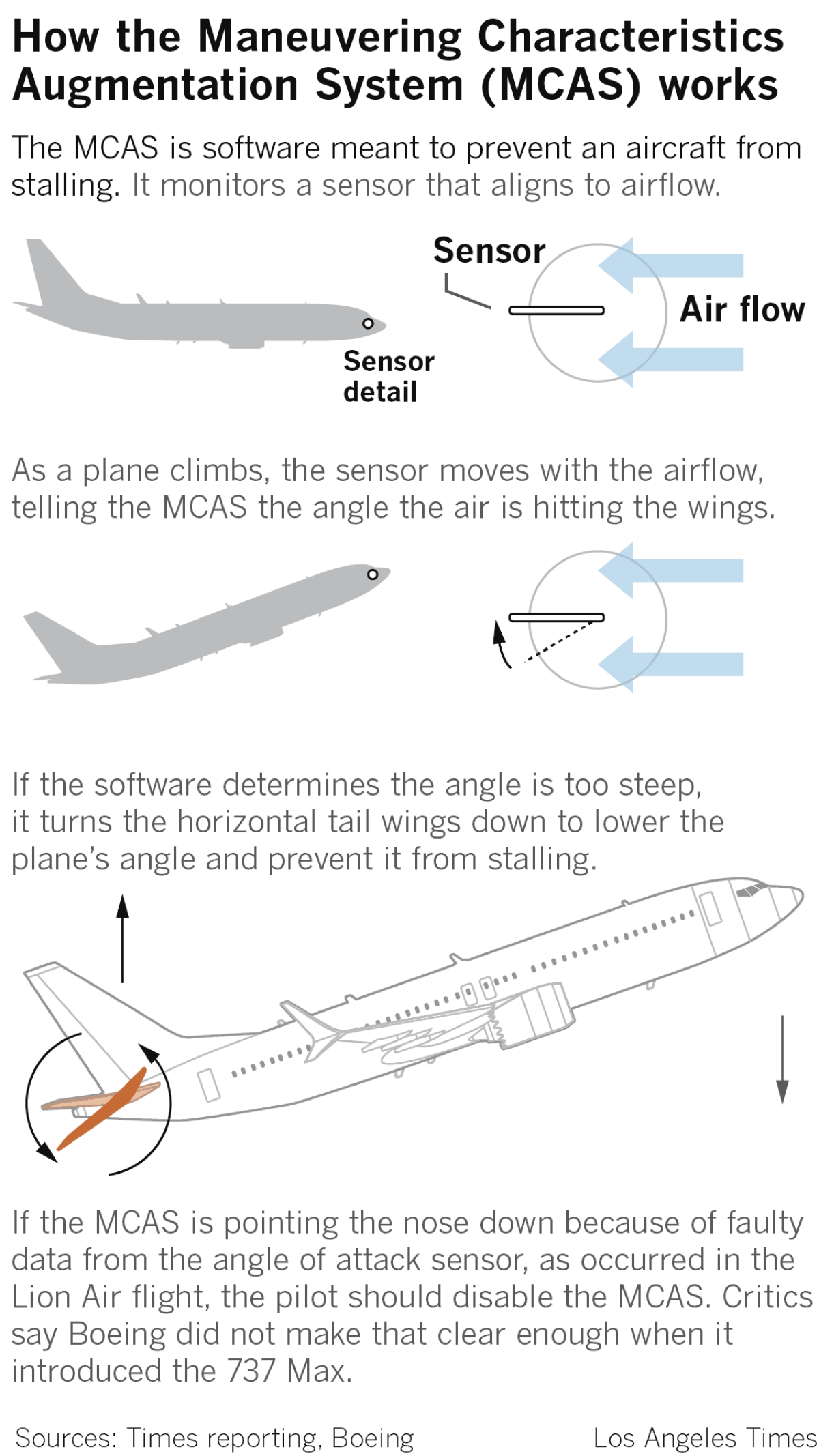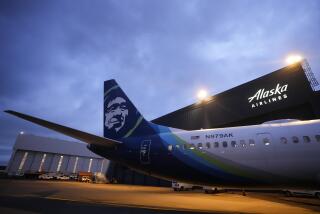FAA board sees no need for new Boeing 737 Max simulator training

- Share via
A board of pilot experts appointed by U.S. aviation regulators has reviewed Boeing Co.’s proposed software fix for the grounded 737 Max aircraft and concluded that pilots won’t need additional simulator training once the plane is returned to service.
That was good news for the company, which is still besieged by fallout from the problem with its 737 Max planes. On Tuesday, two leading shareholder advisory firms — Institutional Shareholder Services and Glass Lewis — called for Boeing to eventually appoint an independent director to lead its board rather than concentrating power in the hands of the chief executive.
The draft report by a Federal Aviation Administration Flight Standardization Board is an important first step in reviewing the still-unfinished upgrade to the 737 Max family of aircraft. It was posted on the FAA’s website, and the public has until April 30 to make comments.
The proposal calls for stepped-up training on the anti-stall system called MCAS that is linked to two fatal crashes since October. It stops short of requiring costly simulator training that could complicate the plane’s return to service.
A Boeing spokesman couldn’t immediately be reached for comment. Boeing shares climbed 1.7% to $381.72.
Boeing’s finalized software upgrade hasn’t been sent to FAA yet for approval, and the company isn’t expected to do so until the end of the month at the earliest.

The company’s bestselling jet has been grounded since March 13, three days after the second fatal accident within five months. In both crashes, MCAS — short for Maneuvering Characteristics Augmentation System — activated as a result of a malfunction, causing the planes’ noses to lower and confusing pilots. Both planes dived steeply into the ground, killing a total of 346 people.
The Chicago company is devising a software fix to make the system less aggressive and to prevent it from making the repeated nose-down commands seen in the accidents. It will also include new cockpit alerts showing when the system malfunctions.
The Flight Standardization Board is made up of FAA officials as well as technical experts from outside the agency. It establishes requirements for pilot training on aircraft models and may be consulted after accidents, according to FAA documents.
It initially signed off on the training requirements for the Max aircraft in 2017. Last month it conducted a new evaluation of MCAS as a result of the accidents.
“The MCAS system was found to be operationally suitable,” the report said.
The report said that MCAS should be a “special emphasis” area for pilots being trained on the plane for the first time or transitioning to it from the most recent generation of 737 aircraft.
“MCAS ground training must address system description, functionality, associated failure conditions and flight crew alerting,” the report said.
No airlines in the United States have a Max-specific simulator.
How a 50-year-old design came back to haunt Boeing’s 737 Max jet »
Returning the 737 Max to service will require many more steps than the report. Not only must it receive a technical sign-off by the FAA, but there is also the tricky issue of public acceptance after the high-profile crashes in Indonesia and Ethiopia. Foreign regulators, which control operations in their own nations, also need to agree that the plane is safe.
The FAA held a meeting Friday in Washington with the three U.S. airlines that fly the 737 Max along with representatives of their pilots unions to discuss the steps needed to return the plane to service.
In addition to training issues, the union representing pilots at American Airlines, the Allied Pilots Assn., supports a review and updating of a crucial procedure required to prevent an MCAS-caused crash before the fixes.
The list of steps required to turn off the motor that was driving down the nose of the two planes that crashed apparently hasn’t been updated for decades, according to pilots who were in the recent meeting with the FAA.
“Let’s take this unfortunate coincidence and opportunity to clean house on this,” said Dennis Tajer, an Allied Pilots Assn. spokesman and a captain at American. “Let’s not use the excuse that it wasn’t related to MCAS and it’s all about getting the Max flying again. If we can do something better today, why put a timeline on it that’s distant?”
Once the upgrades to MCAS are installed, the system shouldn’t be strong enough to cause a crash during a malfunction and that earlier procedure won’t be needed, according to Boeing.
More to Read
Inside the business of entertainment
The Wide Shot brings you news, analysis and insights on everything from streaming wars to production — and what it all means for the future.
You may occasionally receive promotional content from the Los Angeles Times.










